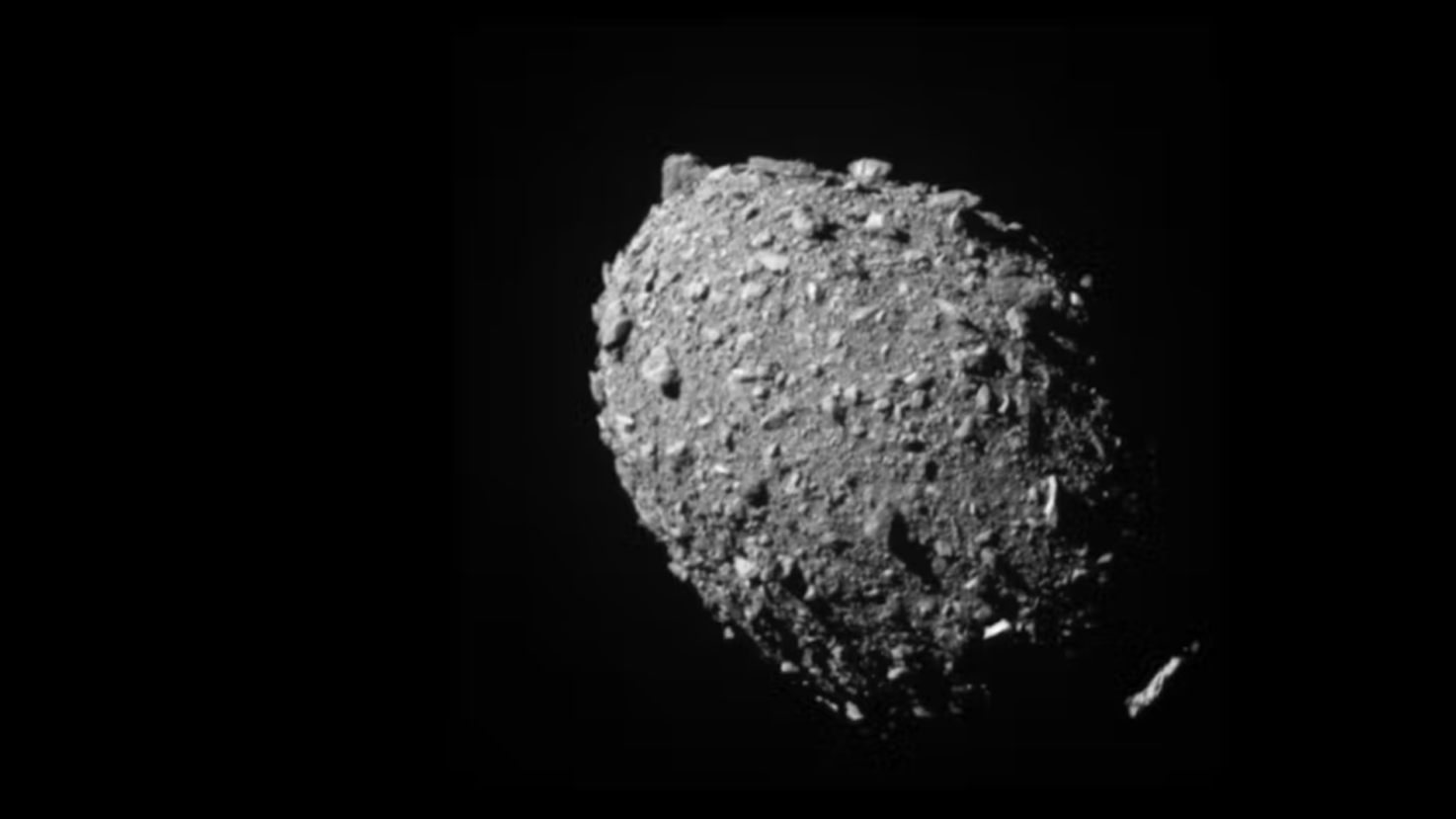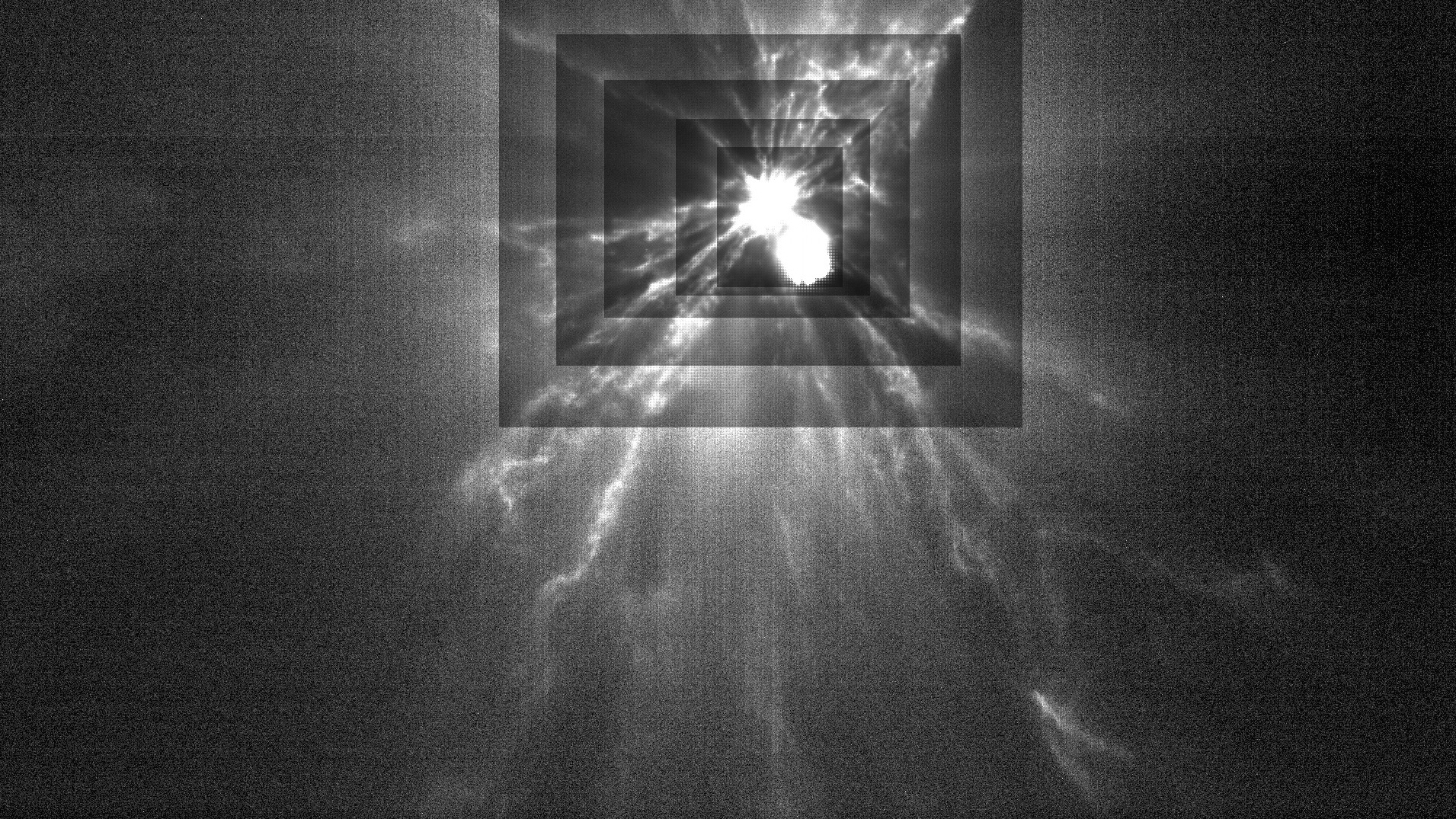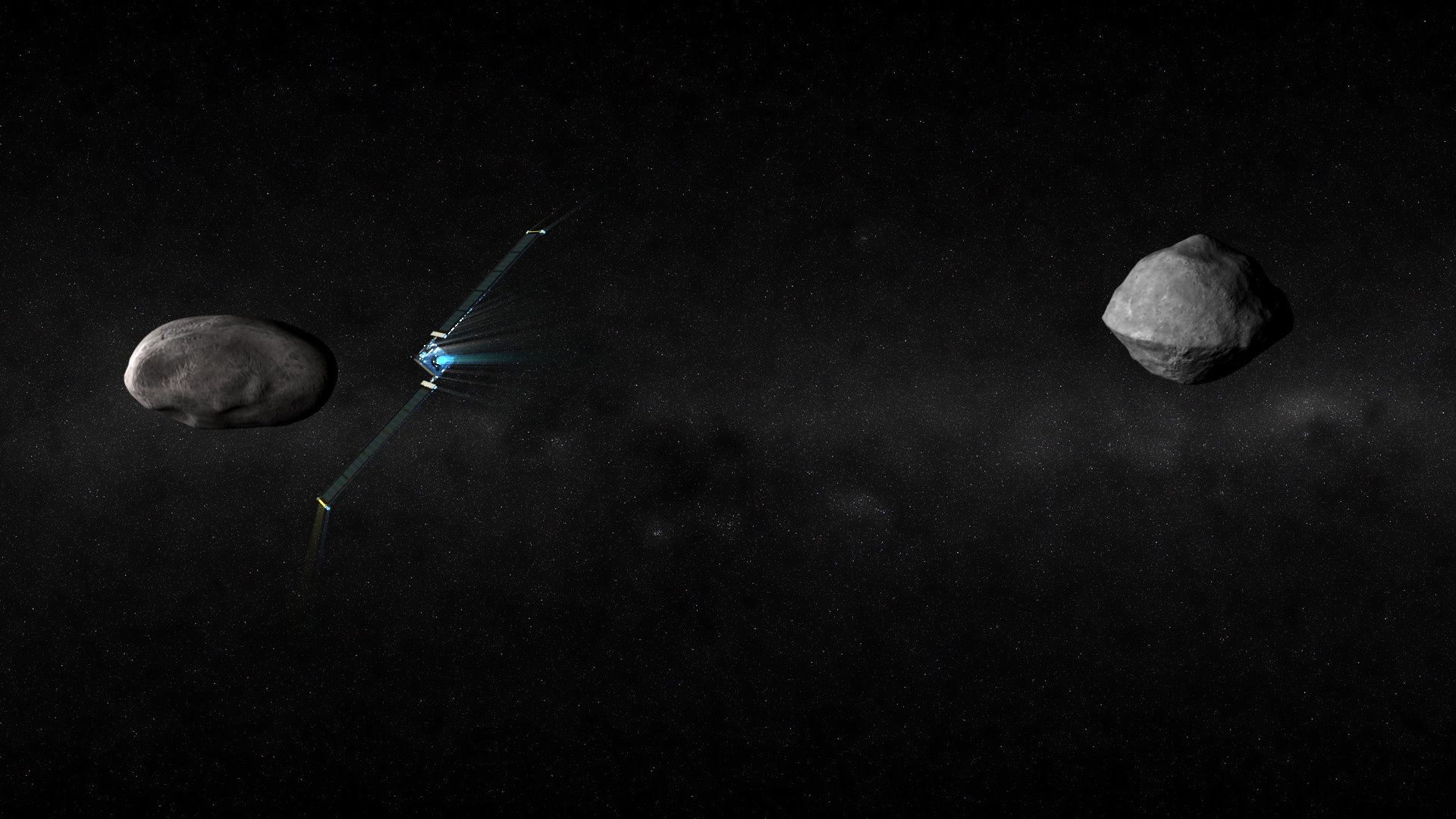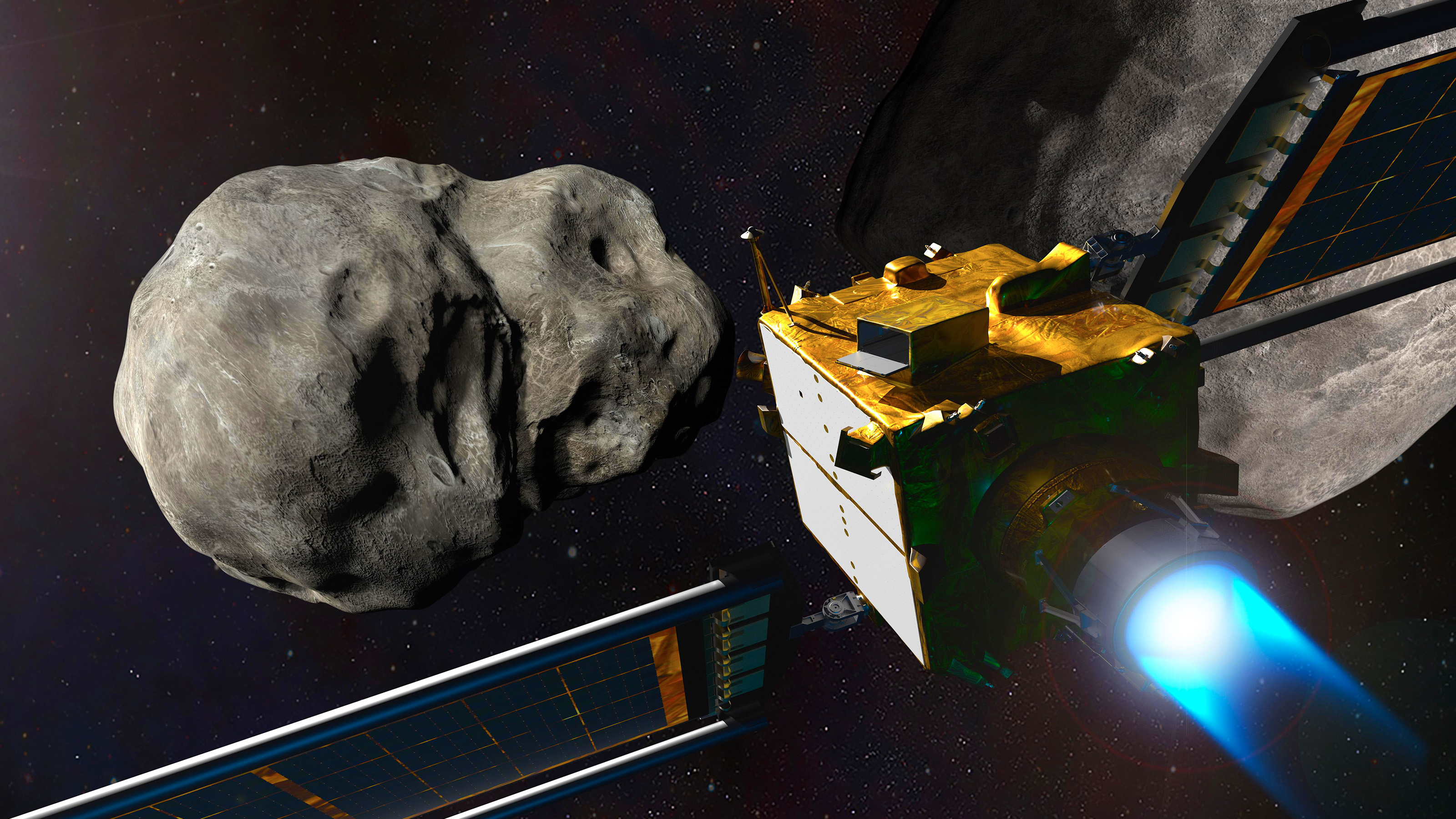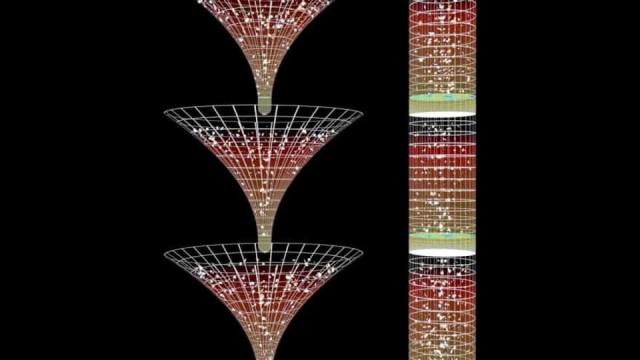Rubble pile asteroids are really hard to break

- There are two types of asteroids: a single massive rock or a floating pile of rubble.
- Rubble pile asteroids may be more robust than previously thought, surviving for billions of years.
- There is no one-size-fits-all answer for deflecting an asteroid. The only constant is that in every case, a lot of time would be needed.
There are more than a million asteroids one kilometer in diameter or larger roaming through our Solar System. Tens of thousands of these are near-Earth asteroids — those which come close to our home planet or cross its orbit. None of these are in danger of colliding with Earth in the near future — none that we know of, at least. The ones we don’t know about are those that worry us.
Asteroids come in different shapes and sizes, and one key categorical distinction: Monolithic asteroids are a single rock, while rubble pile asteroids are actually many rocks bound together by gravity. If we were to discover an asteroid on a collision course with Earth, deflection strategies may change depending on this and many other attributes of the asteroid.
Indeed, someday we might need to save our planet from an asteroid, and if we are to succeed, we need to know what we are up against. It is here that we turn to a Japanese space mission, a group of scientists from Australia, and three tiny flecks of dust.
Landing on the asteroid, sort of
In 2005, the Japanese Aerospace Exploration Agency’s probe Hayabusa approached Itokawa, a rubble pile asteroid. The probe studied the asteroid’s shape, color, spin, and density, among other properties. Then it did something that had never been done before: It landed on the asteroid.
Well, landing might be too strong a term. It would be most accurate to say that Hayabusa gently touched Itokawa, as the gravity of the asteroid was so low. Even so, it was a momentous first, and the probe collected tiny flecks of dust from the asteroid’s surface. These flecks were collected in a small capsule, which returned to Earth and landed in the Australian Outback.
Three of these flecks of dust ended up in Professor Fred Jourdan’s lab at the Western Australian Argon Isotope Facility at Curtin University. Jourdan and his team put the priceless dust flecks through a barrage of tests. What they found surprised them.
If Itokawa was monolithic, models predict it would survive only a few hundred million years before being destroyed by collisions. But Itokawa is not monolithic; instead, it is a rubble pile, one of those flying piles of rocks, and we do not know how long these types of asteroids survive. The tests that Jourdan and his team performed showed Itokawa was very old indeed: at least 4.2 billion years.
The researchers determined this age using various tests that combine microscopy with argon dating. Their results recently appeared in the journal Proceedings of the National Academy of Sciences. The particles in question were initially located deep within the asteroid, protected from collisions with other bodies in the young Solar System. But 4.2 billion years ago, something happened to bring these particles to the surface, where they would be subjected to heating and the shocks of collisions. This event might have been the impact that broke apart Itokawa’s monolithic parent asteroid.
The Solar System is a violent place. Asteroids are constantly colliding and breaking apart. The fact that this asteroid is still around, and has been almost since the formation of the Solar System, indicates that these rubble piles are tough.
“We found that Itokawa is like a giant space cushion, and very hard to destroy,” Jourdan said in a press release.
Defending the Earth
These findings are important because they show us that rubble pile asteroids may be much more resilient than previously thought. If we ever discover an asteroid on a collision course with Earth, this is information we can use to our advantage.
One way to change the course of an asteroid heading our way is to use the kinetic impactor method. Applying a bit of basic physics, we can send a probe to crash into the asteroid, thus slightly changing the object’s momentum and heading. If we do this far enough in advance, the changes would be substantial enough that the asteroid would no longer hit our planet.
Indeed, this concept was recently put to the test, and it worked. NASA’s DART mission (Double Asteroid Redirection Test) launched a spacecraft toward the asteroid Didymos’ smaller satellite, Dimorphos — both of these are rubble pile asteroids. In September 2022, the small spacecraft smashed into Dimorphos with enough force to change its orbital path around Didymos. There is no danger of Dimorphos hitting the Earth, but the mission served as proof of concept: It showed we could move a rubble pile asteroid using a kinetic impactor if the need arose.
Running out of time
But there is a caveat. The kinetic impactor method requires years to plan a mission, launch it, and give the asteroid enough of a nudge to shift its path away from a collision with the Earth. And there is a chance we would not discover a threatening asteroid far enough in advance. “What if we don’t have enough time? What if we suddenly discover that an asteroid will impact Earth within three months? What do we do?” Jourdan asks Big Think.
Instead, Jourdan and his team propose another method — using a nuclear blast to nudge the spatial assailant. “We should explore the possibility to blast a nuclear device very close to the asteroid,” Jourdan says. “The shock wave would be much more energetic than small kinetic impactors like DART, so [it would] deviate the incoming asteroid much further.”
This might be a method suited specifically for rubble pile asteroids. The energy from a nuclear blast might break apart a monolithic asteroid, yet create many pieces that continue along a similar trajectory. Rubble pile asteroids, however, would absorb the energy from the blast. This might not destroy the asteroid, but instead give it enough of a push to alter its path.
Predicting and preventing collisions
In 2008, an asteroid 13 feet in diameter entered the Earth’s atmosphere and exploded, scattering remnants across the Nubian Desert in Sudan. What made this one special was that it was the first asteroid detected before it hit the Earth — a mere 19 hours before impact. The object was spotted by one of the many sky surveys designed to detect asteroids that could be on a collision course with Earth, the Catalina Sky Survey.
There are a number of ground-based surveys to detect near-Earth objects — LINEAR, Spacewatch, and ATLAS are some examples. Others are based in space, like the microsatellite NEOSSat, and NEOWISE, which utilizes the Wide-field Infrared Survey. If one of them were to find an asteroid of significant size on a collision course with Earth, there are a few different ideas of how we can redirect it. Two of these we already mentioned (a kinetic impactor or using a nuclear device).
Another method is dubbed the tow truck idea. We could send a spacecraft to fly near the asteroid. The gravity from the spacecraft, although small, could be enough to pull the asteroid off its track. Of course, we would need years to implement this method. Other ideas range from attaching a rocket to an asteroid to painting the asteroid a lighter or darker color, changing the number of photons coming off the object to slightly redirect its path.
For all these methods, early detection is key. Asteroid redirection strategies involve making small deviations to an asteroid’s path — deviations that need time to propagate a change significant enough to cause an asteroid to miss our planet. If the need arises, early detection could mean the difference between a near-miss or planetary extinction.
